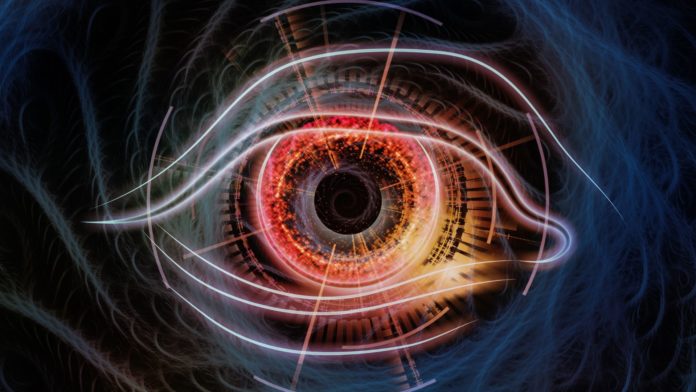A new study by the New York University’s Center for Neural Science and Department of Psychology sought to illuminate the relevance of these brain traits to how we see.
They found that the size of our primary visual cortex and the amount of brain tissue dedicated to processing visual information can predict how well we can see. This reveals a link between brain structure and behavior.
Lead author Marc Himmelberg, a postdoctoral researcher in New York University’s Center for Neural Science and Department of Psychology, said, “We have found that we can predict how well someone can see based on the unique structure primary visual cortex. By showing that individual variation in the structure of the human visual brain is linked to variation in visual functioning, we can better understand what underlies differences in how people perceive and interact with their visual environment.”
The primary visual cortex (V1) organizes the image projected from the eye into a map. However, it is distorted, as are many maps, with some areas of the image larger than others.
Jonathan Winawer and Marisa Carrasco, professors in NYU’s Center for Neural Science and Department of Psychology, said, “Think of a subway map of New York City, which makes Staten Island look smaller than Manhattan. The map maintains some degree of accuracy but enlarges regions likely to be of broader interest. Similarly, V1 enlarges the center of the image we see—that is, where our eyes are fixating—relative to the periphery.”
This is because V1 contains more tissue in the center of our field of vision. V1 also enlarges places to the left and right of where our eyes are fixating compared to locations above and below due to changes in cortical tissue arrangement.
Using functional magnetic resonance imaging (fMRI), they mapped the size of the primary visual cortex (or “V1”) in more than two dozen people. They also measured the quantity of V1 tissue these individuals have dedicated to processing visual information from different locations in their field of view—locations to the left, right, above, and below fixation.
These participants were asked to undergo a task designed to assess the quality of their vision at the same locations in their field of view as the V1 measurements. The participants were asked to distinguish between the orientations of patterns displayed on a computer screen to determine “contrast sensitivity” or the capacity to differentiate between images.
Their findings revealed that changes in V1 surface area could predict contrast sensitivity assessments in persons. To begin with, those with a large V1 exhibited superior overall contrast sensitivity than those with a small V1 (the largest surface area is 1,776 square millimeters [mm2], and the smallest is 832 mm2). Second, those with more cortical tissue committed to processing visual information from a given place in their field of vision had higher contrast sensitivity in that region than people with less cortical tissue dedicated to that region. Third, stronger contrast sensitivity at one place (e.g., left) compared to another site equidistant from fixation (e.g., above) linked to regions with more or less cortical tissue, respectively, across participants.
Carrasco said, “In sum, the more local V1 surface area dedicated to encoding a specific location, the better the vision at that location. Our findings show differences in visual perception are inextricably linked to differences in the structure of the primary visual cortex in the brain.”
Journal Reference:
- Himmelberg, M.M., Winawer, J. & Carrasco, M. Linking individual differences in human primary visual cortex to contrast sensitivity around the visual field. Nat Commun 13, 3309 (2022). DOI: 10.1038/s41467-022-31041-9
